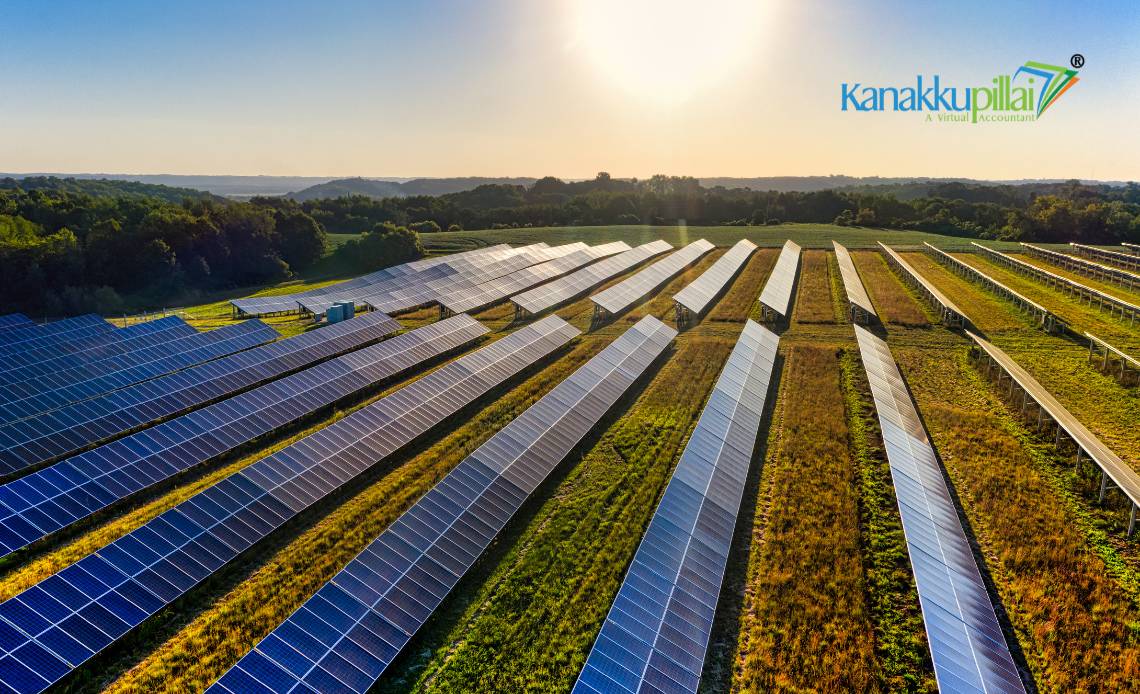Aquaponics is an innovative and sustainable method of agriculture that combines two approaches: aquaculture (raising fish) and hydroponics (growing plants without soil). In this closed-loop system, fish waste is used to nourish plants, and plants filter and purify the water for the fish, creating a perfect balance. Demand for organic and locally grown produce is rising, and aquaponic farming is a profitable way to meet it. Yet, starting a farm has huge expenses, such as land, buildings, materials and labor.
The Complete Leverage for Aquaponic Farm Setup Cost
1. Land and Location Costs
Land is the number one expense in starting an aquaponic farm. That would require 0.5->2 acres of land for medium-sized commercial farms.
In urban or semi-urban areas, the cost of land per acre, however, depends on the location, making it between ₹20 lakhs to ₹1 crore or more. In the remote regions, the rates are reasonable, ranging from ₹5 lakhs to ₹30 lakhs an acre.
Leasing is a reasonable solution for business owners who wish to limit start-up costs. The cost of renting farmland is around ₹10,000 to ₹50,000 per acre per month. This is eliminated if you already own the land.
2. Setting Up the Greenhouse and Infrastructure
Efficient aquaponic farming makes it possible to create a controlled environment. Most farms need a greenhouse or polytunnel to keep temperature, humidity and light constant.
Construction of a greenhouse for a 1-acre farm would come at a price beginning ₹20 lakhs up to ₹40 lakhs depending on quality standards of materials and complexity of irrigation and ventilation systems.
Along with any fish tank/grow beds, you will also need a water reservoir and plumbing systems to circulate water in between those two systems. The infrastructure costs around ₹5 lakhs to ₹15 lakhs.
An autonomous power supply is required for normal production to continue without interruption. Electricity charges for pumps, lighting, and air circulation systems can be compensated by installing solar panels or backup generators with a cost of around ₹5 lakhs to ₹10 lakhs.
The complete infrastructure setup for a 1-acre aquaponic farm costs anywhere between ₹30 lakhs and ₹60 lakhs.
3. Aquaponic System Components
An aquaponic farm must include several core components like fish tanks, grow beds, water pumps, and aeration systems.
This is also suitable for fish farming where soft (Zach) tanks of 1,000 to 5,000 liters can be used. The price of a single tank varies from ₹20,000 to ₹1 lakh, with commercial investment up to ₹5 lakhs to ₹15 lakhs.
These grow beds, in which the plants grow, cost ₹1,000 to ₹5,000 per square meter. For mid-sized farms, the cost for the grow beds range from ₹10 lakhs to ₹20 lakhs.
The water pumps and filters, that facilitate water circulation, cost somewhere between ₹2 lakhs to ₹5 lakhs. The cost of an aeration system that will keep oxygen levels up for the fish ranges between ₹2 lakhs and ₹4 lakhs.
As a precaution against system malfunctions, you should consider investing in backup power sources — generators or solar systems, which can set you back ₹3 lakhs to ₹6 lakhs.
The total costs incurred in the aquaponic system components are around ₹20 lakhs to ₹50 lakhs depending on the scale and quality of the equipment.
4. Fish and Plant Stocking
The types of fish you choose and the kinds of plants they’ll accompany will have a serious effect on the overall costs and profitability of the farm. Common fish in aquaponics include tilapia, catfish, trout and koi, while plants that are popular include lettuce, spinach, tomatoes, and herbs.
Around 2000-5000 fish (roughly ₹2 lakhs-₹5 lakhs) will be required for 1-acre farm.
For plant cultivation, the costs of seeds/seedlings at the very beginning come to about ₹50,000 to ₹1 lakh.
The fishes and plants need to be restocked every few months which costs around ₹1 lakh to ₹3 lakhs on each occasion.
5. Water and Nutrient Management
Testing water quality and nutrient content is crucial in aquaponic farming. Farms need water testing kits, pH meters, and nutrient supplements to do so.
Water treatment systems that include a pH-level system and remove additional impurities come in the range of around ₹1 lakh to ₹3 lakhs.
Soon after, organic fertilizers and pH balancers are required, adding another ₹50,000 to ₹2 lakhs in annual expenses.
6. Labor and Workforce Expenses
Running an aquaponic farm requires trained staff for various activities, such as feeding fish, checking water quality, maintaining equipment and harvesting crops.
It costs approximately ₹15,000 to ₹30,000 per worker per month to hire 3 to 5 workers who are specialized in aquaponics.
Large farms vs Medium-Large farms Annual labor cost annually varies from ₹7 lakhs to ₹12 lakhs depending on the no of employees, their skillset.
7. Expenses for Licensing, Permits and Legal Issues
Aquaponic farming operates under business guidelines so you need a few licenses/licenses depending on how you serve, but it mostly falls under fish farming and agriculture production.
For instance, a fisheries license to farm and sell fish costs anywhere between ₹5,000 and ₹50,000.
In the case of using groundwater, a water usage permit is required which will cost around ₹10,000 to ₹1 lakh.
It can cost around ₹50,000 to ₹2 lakhs across legal and financial submissions to register the farm as a business entity.
8. Cost of Marketing and Distribution
If you can avoid buying a farm to sell tomatoes by hiring a truckload of tomatoes to save marketing and distribution costs when the farm operates, it would be a good option for the farm.
Branding and packaging such as logo designing, labels, and eco-friendly packages will be done between 1 lakh and 5 lakhs.
Running marketing campaigns, both online and offline, ranges from ₹2 lakhs to ₹10 lakhs annually.
Annual logistics & transportation cost of dispatching this produce to local markets or retailers is around ₹1 lakh to ₹5 lakhs.
9. The Costs of Contingency and Maintenance
This allocation prepares you for any planning contingencies that may arise when it comes to unplanned repairs or system failures.
In terms of Payment, maintenance, as well as repair costs, is around ₹2 lakhs to ₹5 lakhs in a year.
The cost of insurance for your farm, including crops, fish and machinery, will come to ₹1 lakh to ₹3 lakhs a year.
10. Total Estimated Cost of Establishing an Aquaponic Farm
The total investment needed to establish a 1-acre aquaponic farm in India varies between ₹80 lakhs and ₹1.5 crore, depending on the location, scale, and quality of equipment.
These costs can be divided into the main expenses of obtaining land, building greenhouses and aquaponic system components, stocking fish and plants, labor costs, and marketing.
The list continues with labor wages, maintenance, marketing, and other operational expenses that affect the bottom line.
Conclusion
Yes, establishing an aquaponic farm is a tremendous investment for you, but in return, you’ll undoubtedly become super profitable in the long run. Aquaponic farms have a high-profit potential business model with proper management, sound financial and right marketing policies,
Nonetheless, a feasibility study and business plan must be prepared to start such a venture. Thus, entrepreneurs can participate in sustainable farming practices while getting the most out of their investment.





